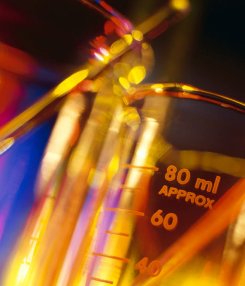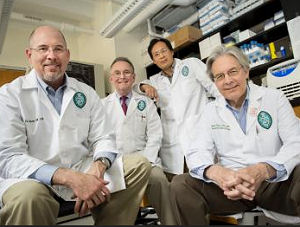
A synthetic compound that can initiate suicide in cancer cells could become the future of anti-cancer therapies, say researchers in the journal Nature Chemical Biology. The new technique is tipped to be an effective way to introduce personalized cancer treatments, which scientists believe would be a great improvement on the more generalized methods currently available.
The central process involved is apoptosis. When a protein called procaspase-3 – common to most living cells – is activated, it transforms into the executioner enzyme caspase-3, which then triggers programmed cell death (apoptosis). But the signaling pathway to procaspase-3 is switched off in cancer cells, allowing them to multiply and grow into tumors.
Now, scientists have found a synthetic compound – procaspase activating compound 1 (christened PAC-1) – which can restore communications to the cancer cell and trick them into committing suicide.
Screening over 20,000 structurally diverse compounds, Hergenrother and colleagues undertook a massive trial and error experiment to identify the compound that could transform procaspase-3 into caspase-3. Once isolated, the team successfully tested the compound’s efficacy in cell cultures and a number of mouse models. The team also used PAC-1 to initiate the deaths of cancer cells in 23 tumors sourced from a local hospital. “This is the first in what could be a host of organic compounds with the ability to directly activate executioner enzymes,” said Hergenrother.
Perhaps most interesting is the possibility of “customized” cancer treatments for individual patients, an approach that has been garnering increasing interest in recent years. In this case, the amount of PAC-1 used to initiate cell death can be personalized, as cell death is directly correlated to how much procaspase-3 is already present in a cell. “The potential effectiveness of compounds such as PAC-1 could be predicted in advance, and patients could be selected for treatment based on the amount of procaspase-3 found in their tumor cells,” explained Hergenrother.


















Comments are closed.